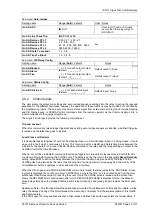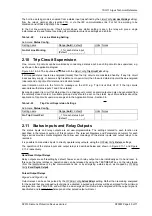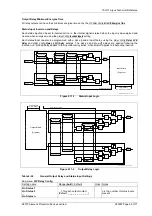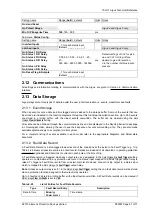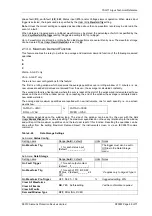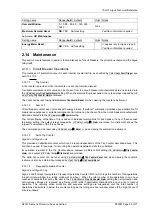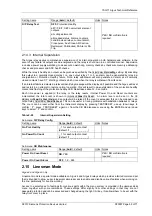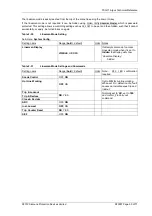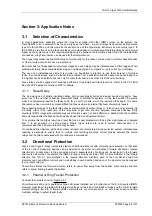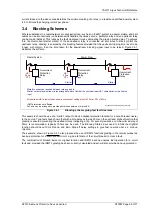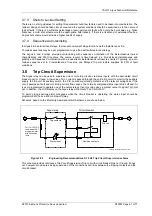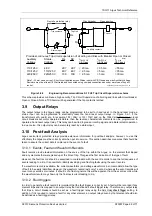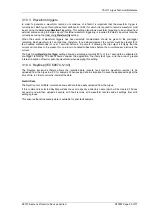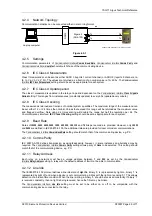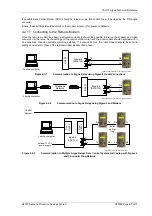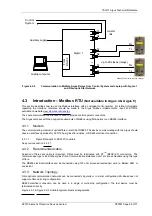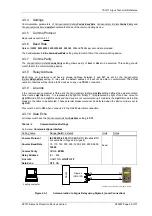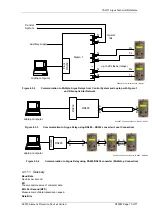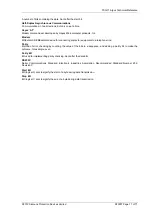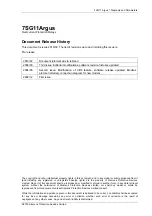
7SG11 Argus Technical Reference
©2013 Siemens Protection Devices Limited
P20007 Page 57 of 71
Busbar Zone Protection
On a radial substation with a defined incomer a simple logic busbar protection can be applied if each circuit is
equipped with an Argus relay, Figure 3.4-2. As above, the Instantaneous Lowset or Highset elements in all relays
can be set to the same setting, with the Incomers having 50ms grading delays set. For a fault on any feeder the
instantaneous starter contact sends a blocking signal to inhibit operation of the high-speed protection on the
incomer (see Figure 3.4-2). This inexpensive logic type protection has been widely applied and has an excellent
operating record. However, if any of the outgoing circuits can feed power back on to the busbars, as can happen
in an interconnected network, then simple non-directional busbar blocking protection cannot be applied.
P300005 Application Diagrams / Busbar Sgl Src
Incomer
Radial Substation
Block - HS1 Inhibit
CBF trip
CBF trip
CBF trip
CBF trip
CBF trip
HS2 FWD
HS2 FWD
HS2 FWD
HS2 FWD
Figure 3.4-2
Busbar Zone Protection with Circuit Breaker Fail using Non-directional Relays. For use
on Single-source Feed Networks
Where a Busbar fault can be back fed via a feeder then directional Argus relays can be installed on each circuit
and employed as shown in Figure 3.4-3.
Phase and Earth Fault HighSet 1 elements (HS1) are applied to perform the busbar fault trip function and in all
relays, both Feeder and Incomer, are set to the same current setting, above the maximum load current but
beneath the minimum fault current, and with a minimum, typically 100ms, grading delay. Each HSI output is
mapped to trip its associated Circuit Breaker, therefore, if no block signal is raised then all circuits with current
above HS1 setting will be tripped.
Phase and Earth Fault HighSet 2 Forward elements (HS2) in all relays, both Feeder and Incomer, are set to the
same setting and Forward with no delay (instantaneous) and are connected to the block (Inhibit) control line of the
HS1 elements on all relays. Thus for faults outside the zone busbar protection all HS1 instantaneous elements
will be inhibited. The forward IDMTL function is set to trip a faulted feeder in accordance with the system grading
requirement.
With Argus relays a busbar fault trip initiation needs to be delayed by only 50ms, this is sufficient to enable a
feeder circuit relay fast start output contact to block the incomer circuit relay should the fault be on a feeder.
Adoption of this philosophy will result in fast clearances of busbar faults coupled with through fault stability.
If Circuit Breaker fail is required then this must be mapped out from each relay into all other relays on the busbar,
each relay must accept an external Trip input energised from any other relay; or the CBF outputs must be
connected in parallel to a separate common Trip circuit for all Circuit Breakers.

